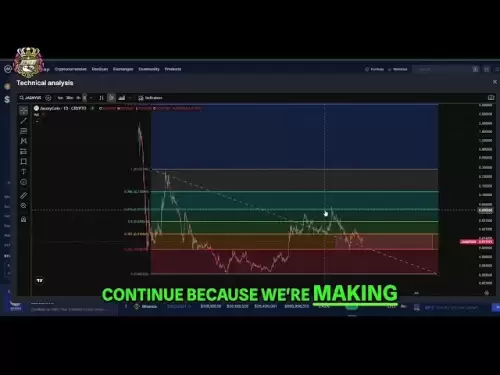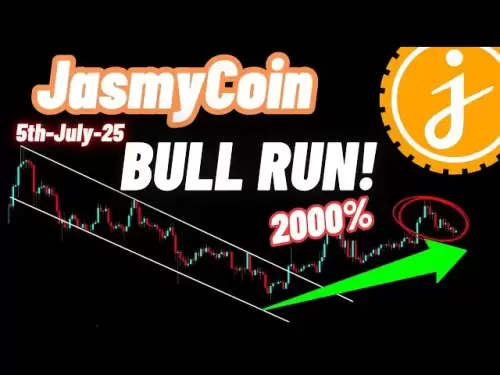-
 Bitcoin
Bitcoin $108,250.0992
0.11% -
 Ethereum
Ethereum $2,515.9404
0.03% -
 Tether USDt
Tether USDt $1.0003
0.00% -
 XRP
XRP $2.2166
-0.19% -
 BNB
BNB $656.5904
0.29% -
 Solana
Solana $147.4122
-0.58% -
 USDC
USDC $1.0000
-0.01% -
 TRON
TRON $0.2830
0.06% -
 Dogecoin
Dogecoin $0.1641
0.27% -
 Cardano
Cardano $0.5739
-0.19% -
 Hyperliquid
Hyperliquid $39.1463
-0.11% -
 Sui
Sui $2.8882
-0.02% -
 Bitcoin Cash
Bitcoin Cash $487.6428
0.31% -
 Chainlink
Chainlink $13.2097
0.07% -
 UNUS SED LEO
UNUS SED LEO $9.0308
0.10% -
 Avalanche
Avalanche $17.8608
0.13% -
 Stellar
Stellar $0.2379
-0.06% -
 Toncoin
Toncoin $2.7400
-0.39% -
 Shiba Inu
Shiba Inu $0.0...01144
-0.36% -
 Litecoin
Litecoin $87.5467
0.66% -
 Hedera
Hedera $0.1538
0.22% -
 Monero
Monero $315.5479
0.36% -
 Dai
Dai $1.0000
0.00% -
 Polkadot
Polkadot $3.3523
-0.71% -
 Ethena USDe
Ethena USDe $1.0003
0.01% -
 Bitget Token
Bitget Token $4.3960
-1.03% -
 Uniswap
Uniswap $7.2663
4.19% -
 Aave
Aave $272.8619
2.04% -
 Pepe
Pepe $0.0...09676
-0.18% -
 Pi
Pi $0.4586
-2.87%
How to filter MA moving average false signals? Methods to improve accuracy?
To filter out MA false signals in crypto trading, use multiple time frames, combine with other indicators like RSI and MACD, and apply price filters and volume confirmation.
May 22, 2025 at 04:08 am
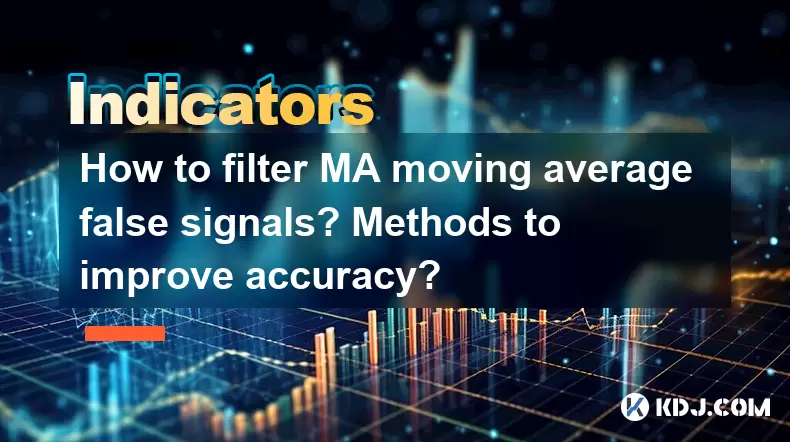
In the world of cryptocurrency trading, the Moving Average (MA) is a popular technical indicator used by traders to identify trends and potential entry and exit points. However, one of the challenges traders face is dealing with false signals generated by the MA. These false signals can lead to poor trading decisions and potential financial losses. In this article, we will explore various methods to filter out MA moving average false signals and improve the accuracy of your trading strategies.
Understanding MA False Signals
Before we dive into the methods to filter out false signals, it's important to understand what they are. A false signal occurs when the Moving Average suggests a trend change that does not materialize. This can happen when the price briefly crosses the MA line but then quickly reverts back to its original direction. False signals are particularly common in volatile markets like cryptocurrencies, where price movements can be erratic and unpredictable.
Using Multiple Time Frames
One effective way to filter out false signals is to use multiple time frames. By analyzing the MA on different time frames, you can gain a more comprehensive view of the market trend and reduce the likelihood of being misled by short-term price fluctuations.
- Select at least two different time frames, such as a short-term (e.g., 15-minute) and a longer-term (e.g., 1-hour) chart.
- Compare the MA signals on both time frames. If the signals align, it increases the probability that the trend is genuine.
- Wait for confirmation on the longer time frame before making a trading decision. This can help you avoid acting on false signals that may appear on the shorter time frame.
Incorporating Other Technical Indicators
Another method to improve the accuracy of MA signals is to combine the MA with other technical indicators. By doing so, you can cross-verify the signals and increase the reliability of your trading decisions.
- Use the Relative Strength Index (RSI) to confirm overbought or oversold conditions. If the MA suggests a bullish trend and the RSI is below 30, it could indicate a stronger buying opportunity.
- Implement the Moving Average Convergence Divergence (MACD) to identify potential trend reversals. If the MACD line crosses above the signal line while the MA indicates an uptrend, it can reinforce the bullish signal.
- Apply the Bollinger Bands to gauge volatility. If the price is hugging the upper Bollinger Band and the MA suggests a downtrend, it might be a false signal caused by temporary volatility.
Applying MA Crossovers
MA crossovers are a common technique used by traders to identify trend changes. A crossover occurs when a shorter-term MA crosses above or below a longer-term MA. While this method can generate useful signals, it can also produce false signals, especially in choppy markets.
- Use a combination of short-term and long-term MAs, such as a 9-day and a 21-day MA.
- Wait for a confirmed crossover on both the short-term and long-term MAs before taking action. This can help filter out false signals caused by brief price movements.
- Consider using a third MA as a filter. For example, if the 9-day MA crosses above the 21-day MA, but the price remains below a 50-day MA, it might be a false bullish signal.
Implementing a Price Filter
A price filter is another technique that can help reduce false signals. A price filter requires the price to move a certain percentage or number of points away from the MA before a signal is considered valid. This can help filter out minor price fluctuations that might otherwise trigger false signals.
- Determine an appropriate price filter level based on the volatility of the cryptocurrency you are trading. For example, you might set a 1% price filter for a highly volatile asset.
- Apply the price filter to both bullish and bearish signals. For a bullish signal, the price must move above the MA by the specified percentage or number of points. For a bearish signal, the price must move below the MA by the same amount.
- Adjust the price filter as needed based on market conditions. In a less volatile market, you might use a smaller price filter to avoid missing potential trading opportunities.
Using Volume Confirmation
Volume is a crucial factor in confirming the validity of MA signals. High trading volume can indicate strong market interest and increase the likelihood that a signal is genuine. Conversely, low volume might suggest a lack of conviction behind the price movement, increasing the chances of a false signal.
- Monitor trading volume alongside the MA. If the price crosses the MA on high volume, it can provide additional confirmation of the signal's validity.
- Use volume indicators such as the Volume Weighted Average Price (VWAP) or the On-Balance Volume (OBV) to further analyze volume trends. If these indicators align with the MA signal, it can strengthen the case for a genuine trend change.
- Be cautious of signals that occur on low volume. If the price crosses the MA but the volume is significantly lower than average, it might be a false signal that lacks market support.
Applying Trend Confirmation Techniques
Trend confirmation techniques can help filter out false signals by ensuring that the overall market direction aligns with the MA signal. By confirming the trend using additional methods, you can increase the accuracy of your trading decisions.
- Use trendlines to identify the overall market direction. If the MA signal aligns with the trendline, it can provide additional confirmation of the trend's validity.
- Implement trend-following indicators such as the Average Directional Index (ADX). If the ADX indicates a strong trend and the MA signal aligns with it, it can increase the likelihood of a genuine trend change.
- Analyze chart patterns to confirm the trend. If the MA signal coincides with a bullish or bearish chart pattern, it can provide further evidence of a valid trend change.
Frequently Asked Questions
Q: Can MA false signals be completely eliminated?
A: While it's impossible to completely eliminate false signals, the methods discussed in this article can significantly reduce their occurrence and improve the accuracy of your trading decisions.
Q: How often should I adjust my MA settings?
A: The frequency of adjusting MA settings depends on the market conditions and your trading strategy. In highly volatile markets, you might need to adjust more frequently, while in more stable markets, less frequent adjustments may be sufficient.
Q: Is it better to use simple moving averages (SMA) or exponential moving averages (EMA) to filter false signals?
A: Both SMAs and EMAs can be effective in filtering false signals. EMAs tend to react more quickly to recent price changes, which can be beneficial in fast-moving markets. However, SMAs provide a smoother line that may be more suitable for identifying longer-term trends. The choice depends on your specific trading strategy and the cryptocurrency you are trading.
Q: Can these methods be applied to other technical indicators besides the MA?
A: Yes, many of the methods discussed, such as using multiple time frames, incorporating other technical indicators, and applying trend confirmation techniques, can be applied to other technical indicators to improve their accuracy and filter out false signals.
Disclaimer:info@kdj.com
The information provided is not trading advice. kdj.com does not assume any responsibility for any investments made based on the information provided in this article. Cryptocurrencies are highly volatile and it is highly recommended that you invest with caution after thorough research!
If you believe that the content used on this website infringes your copyright, please contact us immediately (info@kdj.com) and we will delete it promptly.
- BNB, Nano Labs, and Binance: A $160 Million Crypto Play
- 2025-07-06 12:30:13
- Bitcoin, Taxing, and Fund Managers: Navigating the Crypto Maze in NYC
- 2025-07-06 12:50:14
- Mercado Bitcoin, Tokenization, and XRP Ledger: A New Era for Global Finance
- 2025-07-06 13:50:13
- Debt Ceiling, Trump, and Bitcoin's Allure: A New York Minute on Fiscal Policy
- 2025-07-06 12:30:13
- BlockDAG Presale: Aiming for High Returns in a Crowded Crypto Space
- 2025-07-06 14:10:13
- Bitcoin, Ethereum, and Crypto Gains: What's Hot in the NYC Crypto Scene?
- 2025-07-06 13:10:15
Related knowledge
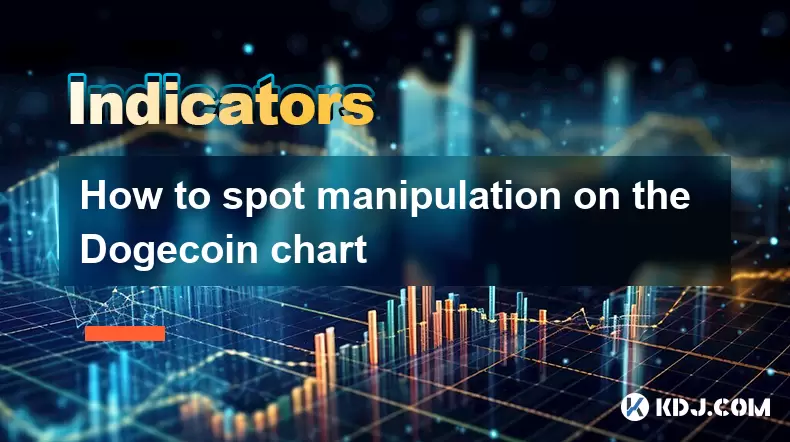
How to spot manipulation on the Dogecoin chart
Jul 06,2025 at 12:35pm
Understanding the Basics of Chart ManipulationChart manipulation in the cryptocurrency space, particularly with Dogecoin, refers to artificial price movements caused by coordinated trading activities rather than genuine market demand. These manipulations are often executed by large holders (commonly known as whales) or organized groups aiming to mislead...
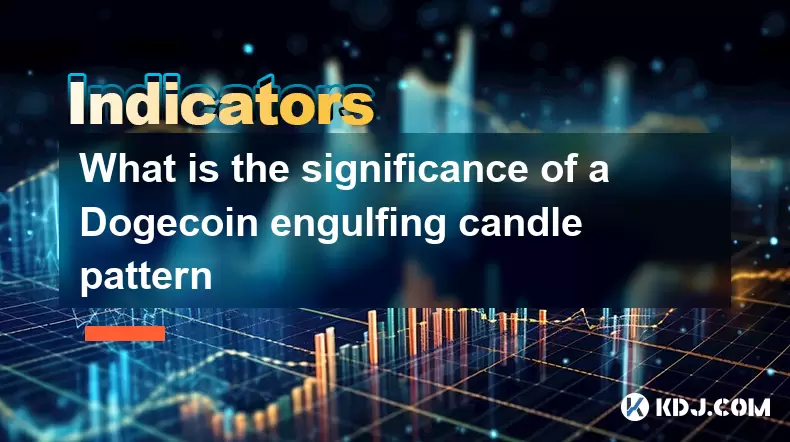
What is the significance of a Dogecoin engulfing candle pattern
Jul 06,2025 at 06:36am
Understanding the Engulfing Candle Pattern in CryptocurrencyThe engulfing candle pattern is a significant technical analysis tool used by traders to identify potential trend reversals in financial markets, including cryptocurrencies like Dogecoin. This pattern typically consists of two candles: the first one is relatively small and indicates the current...

Dogecoin monthly chart analysis for long term investors
Jul 06,2025 at 10:08am
Understanding the Dogecoin Monthly ChartFor long-term investors, analyzing the monthly chart of Dogecoin (DOGE) provides a macro view of its price behavior over extended periods. The monthly chart captures major trends, key resistance and support levels, and potential reversal zones that are crucial for strategic investment planning. Unlike daily or hou...
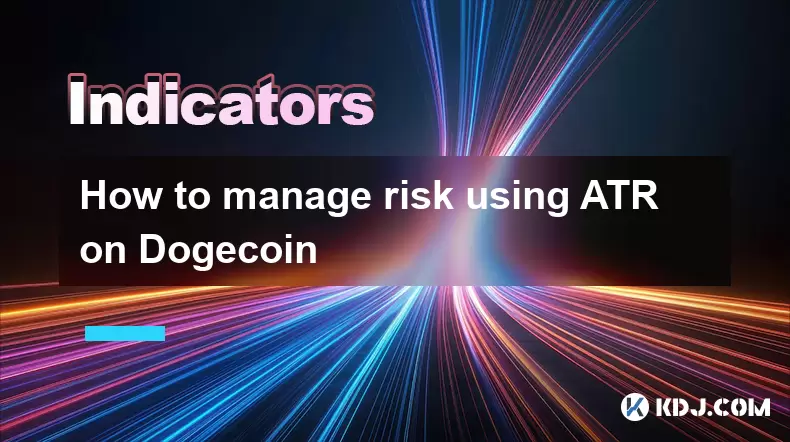
How to manage risk using ATR on Dogecoin
Jul 06,2025 at 02:35am
Understanding ATR in Cryptocurrency TradingThe Average True Range (ATR) is a technical indicator used to measure market volatility. Originally developed for commodities, it has found widespread use in cryptocurrency trading due to the high volatility inherent in digital assets like Dogecoin (DOGE). The ATR calculates the average range of price movement ...
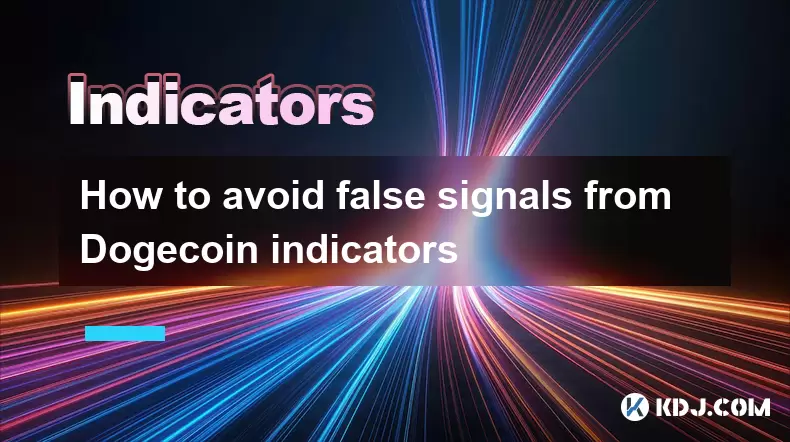
How to avoid false signals from Dogecoin indicators
Jul 06,2025 at 06:49am
Understanding Dogecoin Indicators and Their LimitationsDogecoin indicators are tools used by traders to analyze price movements and make informed decisions. These include moving averages, Relative Strength Index (RSI), MACD, and volume-based metrics. However, these tools can sometimes generate false signals, especially in highly volatile markets like Do...

Dogecoin Donchian Channels strategy
Jul 06,2025 at 02:43am
What Are Donchian Channels?Donchian Channels are a technical analysis tool used to identify potential breakouts, trends, and volatility in financial markets. They consist of three lines: the upper band, which marks the highest high over a specific period; the lower band, which reflects the lowest low over the same period; and the middle line, typically ...

How to spot manipulation on the Dogecoin chart
Jul 06,2025 at 12:35pm
Understanding the Basics of Chart ManipulationChart manipulation in the cryptocurrency space, particularly with Dogecoin, refers to artificial price movements caused by coordinated trading activities rather than genuine market demand. These manipulations are often executed by large holders (commonly known as whales) or organized groups aiming to mislead...

What is the significance of a Dogecoin engulfing candle pattern
Jul 06,2025 at 06:36am
Understanding the Engulfing Candle Pattern in CryptocurrencyThe engulfing candle pattern is a significant technical analysis tool used by traders to identify potential trend reversals in financial markets, including cryptocurrencies like Dogecoin. This pattern typically consists of two candles: the first one is relatively small and indicates the current...

Dogecoin monthly chart analysis for long term investors
Jul 06,2025 at 10:08am
Understanding the Dogecoin Monthly ChartFor long-term investors, analyzing the monthly chart of Dogecoin (DOGE) provides a macro view of its price behavior over extended periods. The monthly chart captures major trends, key resistance and support levels, and potential reversal zones that are crucial for strategic investment planning. Unlike daily or hou...

How to manage risk using ATR on Dogecoin
Jul 06,2025 at 02:35am
Understanding ATR in Cryptocurrency TradingThe Average True Range (ATR) is a technical indicator used to measure market volatility. Originally developed for commodities, it has found widespread use in cryptocurrency trading due to the high volatility inherent in digital assets like Dogecoin (DOGE). The ATR calculates the average range of price movement ...

How to avoid false signals from Dogecoin indicators
Jul 06,2025 at 06:49am
Understanding Dogecoin Indicators and Their LimitationsDogecoin indicators are tools used by traders to analyze price movements and make informed decisions. These include moving averages, Relative Strength Index (RSI), MACD, and volume-based metrics. However, these tools can sometimes generate false signals, especially in highly volatile markets like Do...

Dogecoin Donchian Channels strategy
Jul 06,2025 at 02:43am
What Are Donchian Channels?Donchian Channels are a technical analysis tool used to identify potential breakouts, trends, and volatility in financial markets. They consist of three lines: the upper band, which marks the highest high over a specific period; the lower band, which reflects the lowest low over the same period; and the middle line, typically ...
See all articles





















